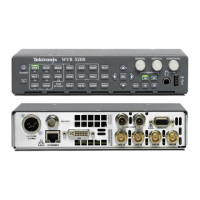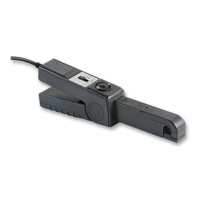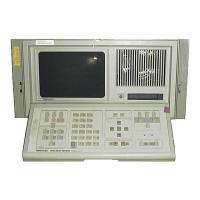Incoming Inspection
Eye (Options EYE and
PHY)
1. Press the FACTO
RY button to restore factory preset.
2. Connect a 525/270 color bars signal from DVG1 to the SDI A input of the
unit under tes
t.
3. Terminate the loopthrough.
4. Press and hold the EYE button (if no EYE button is present, press and hold
MEAS to call up the Eye menu.
5. If the Eye display is not showing, select DisplayType>EyeDisplayfrom
the submenu.
6. Check for the presence of a stable eye diagram in tile 1. (Actual wave shape
depends strongly on the generator.)
7. Record Pass or Fail for Eye Waveform in the test record.
8. Proceed to the next step if option PHY is present. Otherwise, this test is
complete.
9. Press and hold the DISPLAY SELECT 1 button to display the EYE menu.
10. Select DisplayType>JitterDisplayand check for a flat line wave shape.
(Residual jitter level depends strongly on the generator.)
11. Record Pass or Fail for Jitter Waveform in the test record.
Composite Input (Option
CPS)
1. Pres
s the FACTORY button to restore the factory preset.
2. Apply an NTSC SMPTE color bar signal from the TG2000 AVG1 module to
the
Composite A input. Install a termination on the loop through.
3. Select the CMPST A input from the fr ont panel.
4. Observe the WFM in tile 1, the signal should be aligned with the zero
graticule.
5. Record Pass or Fail in the test record.
6. Observe the Vector in tile 2, the burst should be aligned with the burst marker
that extends to the left of the vector center.
7. Record Pass or Fail in the test record.
8. Observe the picture in tile 3. It should be stable and s how t he color bar signal.
9. Record Pass or Fail in the test record.
10. If desired, move the input and termination to input B and repeat steps 3 - 8.
60 Waveform Rasterizers Specifications and Performance Verification
